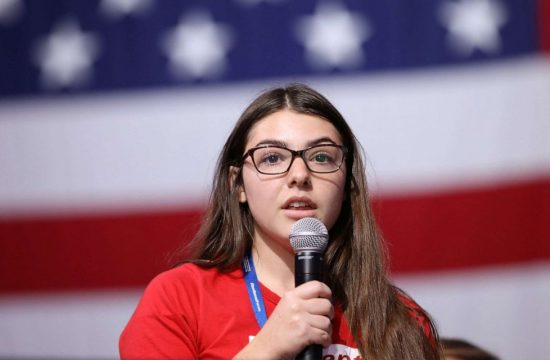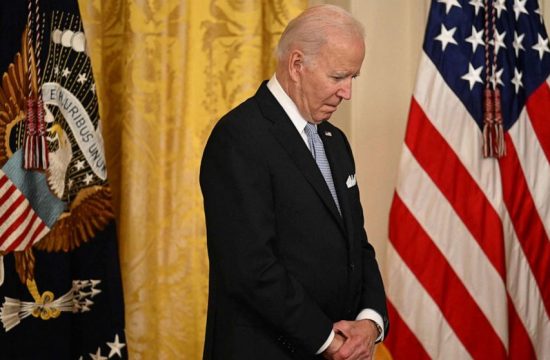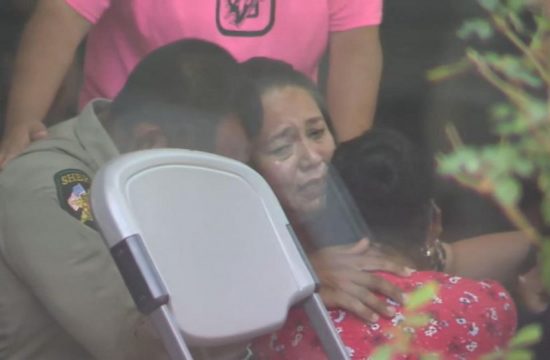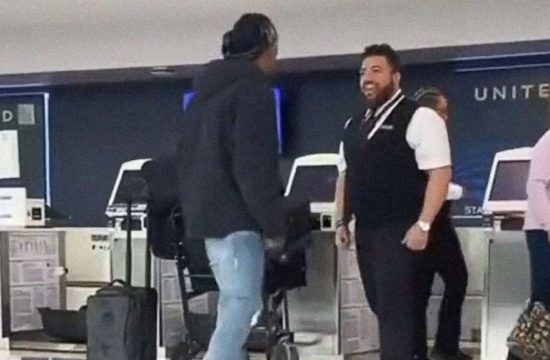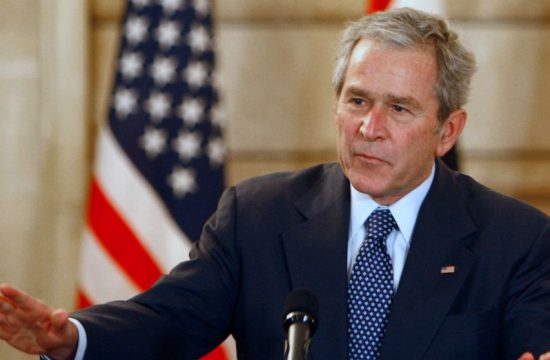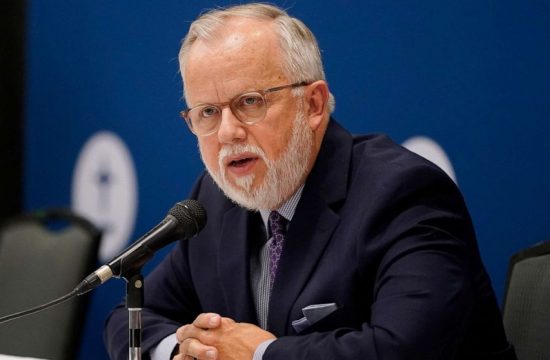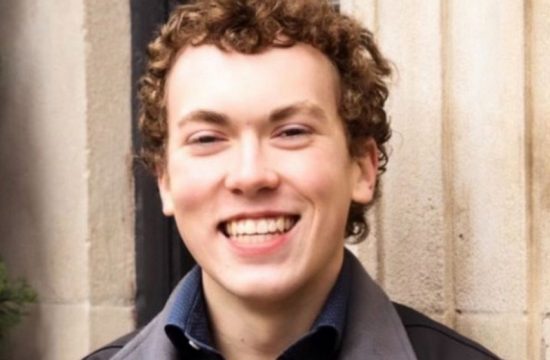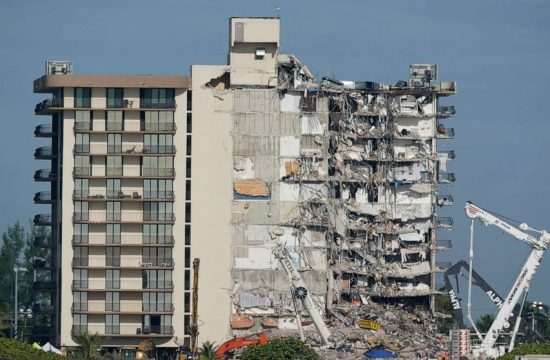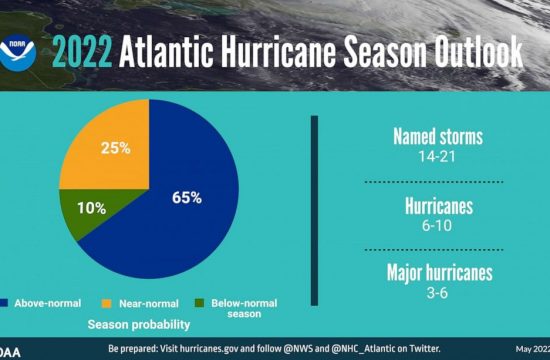De-escalation training.
It’s on the tip of the tongue of both police departments and reformers — the idea that officers can be trained effectively to throttle their use of force to avoid deadly escalations.
In the wake of George Floyd’s death at the hands of police in Minneapolis, it was embraced by Senate Republicans, led by the party’s lone Black senator, Tim Scott, of South Carolina — an effort that was blocked by the body’s Democrats.
“One of the challenges in these split-second decisions is the need for more training, that’s why the de-escalation aspect is so important,” Scott said after Rayshard Brooks, who is Black, was shot and killed by police in a Wendy’s parking lot in Atlanta earlier this month, one in a series of recent events that has galvanized the police reform movement.
The Republican initiative sought “alternatives to use of force and de-escalation tactics,” according to the bill. That “includes techniques and strategies that are designed to protect the safety of the person experiencing the behavioral health crisis, law enforcement officers and the public,” teaching officers, in other words to be “guardians,” who only use force as a last resort instead of “warriors.”
But a crucial question is whether teaching police officers to rely on communication and negotiation tactics rather than physical force can effectively teach a guardian-style mentality and whether training can actually drive down use of force in police departments across the country. De-escalation training has been adopted by a number of departments around the country in various forms, with 15 to 17% of departments practicing a form of crisis intervention training that includes de-escalation techniques.
Experts who study de-escalation, as well as law enforcement officials who mandate it for their forces, say it’s a mixed bag. On the one hand, there’s no conclusive evidence that de-escalation training works. There’s also no evidence that it doesn’t work. And the training has never been rigorously studied at all.
Law enforcement leaders who require de-escalation training in their departments are enthusiastic about its potential on an anecdotal level. But some say they aren’t sure every officer can be trained.
“I think we would find that there’s people who can’t be reached by training,” said Sylvia Moir, chief of police in Tempe, Arizona, whose department is currently involved in a de-escalation training study conducted by Arizona State University and partially funded by the Bureau of Justice Assistance.
That’s where appropriate screening comes in, Moir added. A mechanism to screen out “hyper-masculine traits” in recruits and individuals who aren’t open to training could keep so-called bad actors out of the force, she said.
Moir rejected the “warrior” vs. “guardian” binary.
“So little of what I do is binary,” Moir said. “We are guardians always and warriors when the situation needs us to be.”
The limits of de-escalation training for police officers
De-escalation is a broad term, explained Chuck Wexler, executive director of the nonprofit Police Executive Research Forum, an organization focused on improving policing.
Wexler, who has worked extensively with American and British police forces over the course of his career, often makes comparisons to Scotland, where police officers rarely carry lethal weapons and which is considered a model for de-escalation training in the U.S.
But comparisons to Scotland fail to account for a key difference between the two nations. Americans own more guns per capita than any other nation in the world. Scotland doesn’t even break the Top 10.
“That’s why American police tend to be more cautious and protective,” Wexler said. “If somebody appears to have a bulge in their jacket, police get very nervous. You can’t do anything with any of this unless the officer feels safe,” he added.
Traditional policing often escalates tense situations involving civilians, according to Wexler. “A person has a rock, they take out a baton,” Wexler said.
“That’s part of the culture. When I say ‘back away,’ some police officers recoil. Police are taught you never give up,” Wexler said. In some situations it’s okay to back off, he added, or even physically leave the scene.
“How do we teach the police, so that everybody can go home safely?” he asked.
That’s where it gets complicated. Unlike in the United Kingdom and in many European countries, which have national police agencies, policing in the United States is highly fractured. Teaching police officers de-escalation techniques and philosophy here has to happen one department at a time.
In the U.S., there are roughly 18,000 separate police agencies and no national standards for use-of-force training. Half of local police departments have fewer than 10 full-time officers, according to the Bureau of Justice Statistics. Teaching the national law enforcement body to de-escalate conflict and embrace a guardian mindset would require buy-in from agency leadership on a department-by-department basis.
In small departments, with tighter budgets and staffing constraints, sparing one of 10 officers for hours or days of classroom learning may be a difficult proposition.
“It’s a slow turn to change an entire field,” said Robin Engel, a criminology professor at the University of Cincinnati, who studies policing policy.
’15 different answers’
Without standardization, there’s also confusion about what counts as de-escalation training in the first place.
“If you asked 15 different departments about de-escalation training, they would give you 15 different answers,” Wexler said.
To help cut to the chase, Wexler puts officers in a classroom and has someone pull out a knife and threaten them. Their training, or lack thereof, shines through.
De-escalation training varies dramatically from department to department, in delivery, dosage and content, Engel said.
Indeed, a 2015 survey of police academies conducted by PERF found that recruits spent eight hours each on de-escalation, crisis intervention and use of force training. They spend 58 hours on firearm training and 49 hours on defensive tactics.
“None of it has been systematically tested,” she added.
Until the coronavirus pandemic hit, the New York Police Department, the largest law enforcement agency in the country, held de-escalation training involving classroom lectures, panels with community members with mental illness and live-action role play between officers and actors hired by the department, sometimes played out on sets designed to look like a bodega, a subway car or a New York City apartment.
The eight-hour, multi-day training, known as crisis intervention training, or CIT, includes teaching de-escalation techniques, with a focus on de-escalating interactions with civilians who are mentally ill. A quarter of the 1,000 people shot and killed by police officers in 2018 had mental illness.
Since the program began in 2015, 16,800 members of the NYPD or a little less than half of overall personnel, have been CIT certified, according to Lt. Angela Ho, one of the coordinators of the of NYPD’s CIT training unit.
Fifty-eight percent of the patrol force have been certified, she added.
While the NYPD says its goal is to train its entire force, the department has no hard timeline for when the full force is expected to complete CIT training, according to Ho. The department has also previously been criticized for being so slow to roll out the training to everyone. Until a critical mass of the patrol force is trained, an officer responding to an assault in progress or a mental illness call could potentially be untrained in de-escalation.
“We shouldn’t wash it down by rushing everybody in,” Ho said, explaining that quickly training more officers might compromise the program’s effectiveness.
But even when officers are trained, there’s no guarantee it will translate to better behavior in the field.
Garrett Rolfe, the officer who was charged with fatally shooting Brooks in Atlanta, was trained in de-escalation and cultural awareness just to months before the shooting, the Atlanta Police Department said. Rolfe’s lawyer aid the charges were rusheds and that his client’s actions “were appropriate.”
And prior to George Floyd’s killing, the Minneapolis police department had attempted to institute reforms, including trainings sessions as an alternative to disciplining cops.
It apparently wasn’t enough. According to the Marshall Project, which reviewed court documents, state legislation and a 2015 report by the U.S. Justice Department, even after those changes were instituted, law enforcement in Minneapolis had a clear pattern being reluctant to remove bad officers from patrol.
“They have also failed to set clear criteria on the use of force and de-escalation,” Marshall Project reporters found. Neither the police department not the police chief responded to requests from the Marshall Project to comment on their findings.
Inside the NYPD’s de-escalation training
During the NYPD de-escalation training the actors didn’t hold back, performers involved with the project told ABC News.
They would scream in officers’ faces and curse at them, trying to get them to snap in the classroom the way they might be inclined to do during tense interactions on the street.
There were heartening interactions where officers seemed either naturally inclined towards guardian-style policing or to have learned from their de-escalation training. Renan Kanbay, age 31, an actor who spent three years working on crisis intervention training with the NYPD, said she often played the part of a woman with depression, who wouldn’t leave a park the officer had been ordered to clear after dark.
One female officer treated her softly. The scene ended with the officer giving her a hug, she said. On another occasion, the same scene wrapped when a frustrated officer handcuffed Kanbay, who is slight, with a 5-foot-5 frame, to the floor.
There were also troubling indications of racial biases that were evidenced during the training, a white actor, who didn’t want to share their name, told ABC News. Officers seemed to disproportionately handcuff the black actor among them, the white actor said, but there was never a critical analysis of that disparity in the classroom.
For her part, Kanbay said that the one character she felt like the officers couldn’t connect with was a recurring scene in which she played a Muslim woman with a headscarf. Kanbay, who is Turkish, would scream at the officers in Turkish while portraying a character with severe mental illness, she said.
“You shouldn’t only depend on your language to subdue the other person,” she added, noting that body language and tone of voice are important de-escalation tools.
Focus on crime reduction left police policy research underfunded
Engel, the researcher, doesn’t want to give the impression that she’s against investing in de-escalation training.
On the contrary, she wants the federal government to spend the money to rigorously study de-escalation.
Last week, when Engel testified before President Donald Trump’s commission on law enforcement, she outlined what we don’t know about de-escalation training’s effectiveness.
Although “de-escalation use of force policies and training are widely viewed as a common-sense approach,” she testified, “there is no uniformly accepted definition of de-escalation within the policing field, and little is known about the development, delivery, and impact of police de-escalation training.”
In addition to concerns about whether or not the training works, little is known about how de-escalation training affects officer safety.
Earlier this year, Engel and her colleagues conducted a systematic review of the studies on de-escalation training for the police. There was just one problem. There were no such studies. Of the 64 rigorous studies conducted over the past 40 years, they were primarily done in nursing or psychiatric settings.
“We found zero studies in policing,” Engel told ABC News. “Not one.”
The result is that recommendations for and conversations about de-escalation training “rely heavily on anecdotal evidence and untested propositions about best practice,” Engel concluded.
Decades of neglect and prioritizing research on reducing crime over research on policing policy has left us with little idea of what works and what doesn’t, she said.
“The particular crisis we find ourselves in has exposed how big the gap is between research and practice right now,” Engel said.
While the United States’ fractured policing system makes it difficult to put a national price tag on de-escalation training, it’s safe to say that it’s a multi-million dollar expenditure. When CBS polled 155 police agencies on their racial bias training last year, including the three largest in each state, every department that completed the survey said they offered some form of de-escalation training.
Despite scant evidence, Wexler believes that de-escalation training works. “If we want police to be more humane, we should be investing in them, not walking away from them,” he said. “If you have one bad car stop it will pay for years of de-escalation training,” he added.
Change in the works?
In June, Rep. Eddie Bernice Johnson, D-Tx.,introduced legislation to use federal funding from the National Science Foundation for social and behavior research on policing policy.
“We must explore the legacy of policing and the root cause of the racial disparities we observe,” Johnson said in a statement. “In our search for solutions, we must be guided by evidence grounded in data and scientific research.”
Still, Engel is sympathetic to the bind that police leadership finds itself in.
“The solution can’t be to wait for evidence,” she said. “They need to make decisions now.”
She hopes that police executives will allow researchers like herself to tag along to collect data and evaluate use of force reforms to find out if they work. She also stressed that de-escalation training needs to happen in conjunction with strong policies to hold leadership and rank-and-file officers accountable.
In Oklahoma City, she said, officers are required to fill out a form every time they use force, detailing which de-escalation techniques they attempted first, if any.
“If you just do the training, you might change attitudes but you are less likely to change behavior,” she said. ”
As for the theory that de-escalation training makes good cops better and doesn’t help bad cops, “that’s exactly why the training can not stand alone,” Engel said.
What to know about the coronavirus:
Tune into ABC at 1 p.m. ET and ABC News Live at 4 p.m. ET every weekday for special coverage of the novel coronavirus with the full ABC News team, including the latest news, context and analysis.


